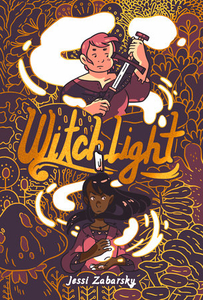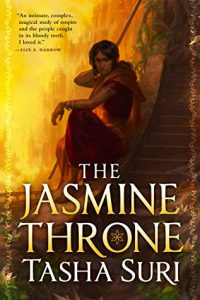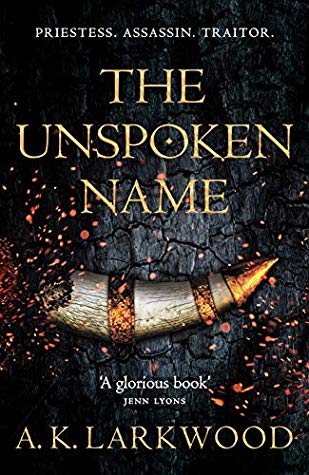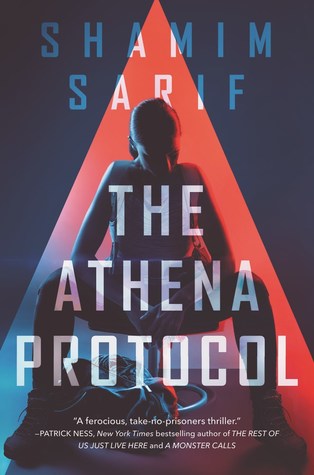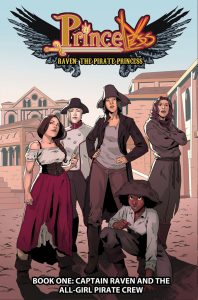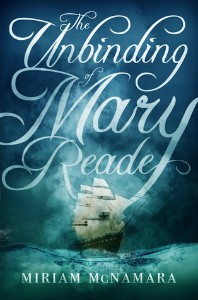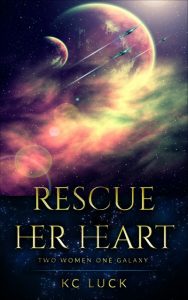Amazon Affiliate Link | Bookshop.org Affiliate Link
Witchlight by Jessi Zabarsky is a cute adventure graphic novel about Sanja, a girl with troublesome brothers and a family that doesn’t understand her, and Lelek, a witch trying to survive on her own as she journeys across the countryside. When someone catches Lelek cheating them and causes a scene, she witnesses Sanja wielding a sword in the resulting chaos and kidnaps her. They end up traveling together, learning about each other and the world around them, and the result is a charming story full of lovely artwork, diverse world-building, and gals becoming much more than pals.
Lelek kidnaps Sanja because she wants Sanja to teach her how to use a sword, showing a somewhat callous disregard for others in how she uses her magic. Sanja agrees to teach Lelek and to travel with her, as long as Lelek stops cheating people. What follows is best described as a longform traveling montage full of moments as the girls attempt to learn sword work, understand magic, and figure out how to keep themselves in the world as they slowly develop feelings for each other. Sanja is optimistic and full of care and quick thinking as she tries to help Lelek. Lelek is suspicious and full of past hurts, operating on a different mode of being than Sanja, but their feelings for each other grow naturally and sweetly. It’s a very cute relationship, buoyed by artwork that conveys feelings well. At first I wasn’t sure if I liked Lelek, but I felt the softening of her attitude along with Sanja, and was rooting for Sanja’s growth of self-confidence and determination, and in the end, I was fully committed to their relationship.
This work also had some things to say about family that I found pretty interesting. Lelek has a Tragic Backstory that shapes all of her present day actions. There’s a clear line between what happened during her childhood to her circumstances during Witchlight. Sanja, on the other hand, was a part of a large family, and had this adventure thrust upon her unexpectedly. Nonetheless, Sanja’s family also influences their travels in many profound ways. Sanja knows how to use a sword, but she is expected to sit quietly and mind the market stall while her brothers go off and have careers using their fighting skills. The family seems to overlook her, and once she gets over the shock of being kidnapped, takes to adventuring like a fish to water. The non-fighting skills she had to learn are useful in their journey too, as she puts them to use supplying her and Lelek, cooking, and in general making sure they’re taken care of to continue their journey. During the height of the story, Lelek has to come to terms with what happened during her past, as they meet people that give them more information on those events. But it is Sanja’s simple, more straightforward family that causes the most difficulties for them, and Sanja and Lelek both face a lot of hard emotional decisions from their family relationships. This book has a lot to say about found family, destiny, and forgiveness that I found very interesting, and it lent a lot of complex emotional flavor to Lelek and Sanja’s relationship.
Also elevating this work is Jessi Zabarsky’s simple but pleasant artwork and world-building. Zabarsky has created a diverse world that is interesting yet recognizable. I was pleased to see the vast range of people she conveyed in the Witchlight. Of the two main characters, Lelek is dark-skinned and Sanja is fat, and every village they travel through is sure to be populated with a range of skin colors and body types. Everyone is also just cute. I adored all of Sanja’s outfits and little head coverings. I loved how expressive Lelek’s face is, and how much emotion was conveyed, not through the dialogue, but through the art.
In conclusion, Witchlight is an adorable sapphic graphic novel full of interesting characters and satisfying emotional arcs. The artwork is easy to digest but also packs a powerful punch. I had a great time reading it, and I do recommend it for anyone who is looking for something cute, with a good balance of adventure to romance.

